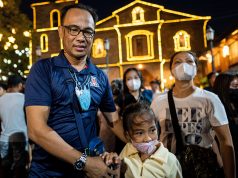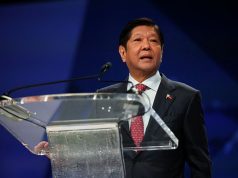
A Filipino writer and a musician took note of some parts of President Rodrigo Duterte’s press conference last Monday night where he was supposed to address the nation about updates on the novel coronavirus cases in the country.
Rolando Tolentino, a writer and University of the Philippines Film Institute’s faculty and former dean of UP’s College of Mass Communication, shared a piece inspired by the chief executive’s speech.
Duterte was asked whether there are enough testing kits in the country should the COVID-19 cases increase.
He initially answered the question with sense but later on went on a history-inspired ramble as he mentioned the Bubonic Plague, the Spanish Flu, the Middle East, the Roman Empire and even witch-hunts.
Duterte’s answer prompted writer Mixkaela Villalon to arrange a “poem” out of his sentences, which social media users have called “incoherent.”
“May bago nang mad poet in town na biglang nag-trending, tinalo ang beatniks, surrealists at dadaists sa absurdity of thought, logic and language use,” Tolentino said as he shared Villalon’s piece.
May bago nang mad poet in town na biglang nagtrending, tinalo ang beatniks, surrealists at dadaists sa absurbity of thought, logic and language use.The Kit by Du30BakitKitbaKitakitaKitamona#COVID19
Posted by Rolando B. Tolentino on Monday, March 9, 2020
In a more serious post, Tolentino aired his disappointment over the conduct of the press conference, noting that Duterte was supposed to speak coherently since he was talking about a national health emergency.
Musician, poet and broadcaster Lourd de Veyra was also inspired to arrange a verse from the history-laden ramble, adding that it might make more “sense” if it was viewed as a “stream-of-consciousness surrealistic verse.”
Baka mas may sense yung nadinig sa presscon kagabi pag inisip as stream-of-consciousness surrealistic verse 🤔ON THE…
Posted by Lourd de Veyra on Monday, March 9, 2020
The same sentiment was shared by historian-blogger Kristoffer Pasion who also shared “The Kit,” claiming that the “presidential stream-of-consciousness talk” had become an “art.”
Meanwhile, other Filipino online users were not so amused with the way his press conference went.
“Nahilo ako sa sinabi niya,” a Reddit user commented.
“He rambles just like Abe Simpson!” another online user exclaimed, referencing a cartoon character.
Presidential spokesperson Salvador Panelo recently addressed the criticisms and said that “they were not listening to the president.”
“The President was very clear. We have the money, we have the protocols,” he said to reporters.
Duterte held the press conference about COVID-19 after meeting with the Cabinet members and a number of Metro Manila mayors.
During which, he declared the suspension of classes in the National Capital Region until March 14 to assess the period of how long the virus can remain alive on surfaces and infect a human.
The Duterte rhetoric
Duterte is known for being spontaneous in his speeches and press conferences. He usually peppers his addresses to the public with profanity, personal anecdotes, jokes and misogynistic remarks.
Last year, he surprised everyone when he nearly had a smooth-sailing State of the Nation Address free of expletives.
An expert believes Duterte’s rhetorical style greatly affects his popularity among Filipinos.
Dennis Coronacion, chair of the University of Santo Tomas’ Political Science Department and vice president of the Philippine Political Science Association, noted that the chief executive uses very simple words and has a humor that appeals to the masses.
“Even the humor, mabenta sa mga Pilipino except meron mga negative reaction doon sa kanyang mga sexist na mga jokes na hindi na nawawala sa ating pangulo,” he said in an interview.
A veteran journalist said that speeches are like homilies “that are meant to be heard.”
“Delivering a speech is talking to an audience. Content is important, but so is the sound of the words, the length of the sentences, the rhyme, the rhythm, the cadence, the syntax. The tone of voice,” Ma. Ceres Doyo said.
She cited American journalist George Plimpton who said that speeches are meant “to inspire, to persuade, to entertain, to instruct” and to “inform.”









